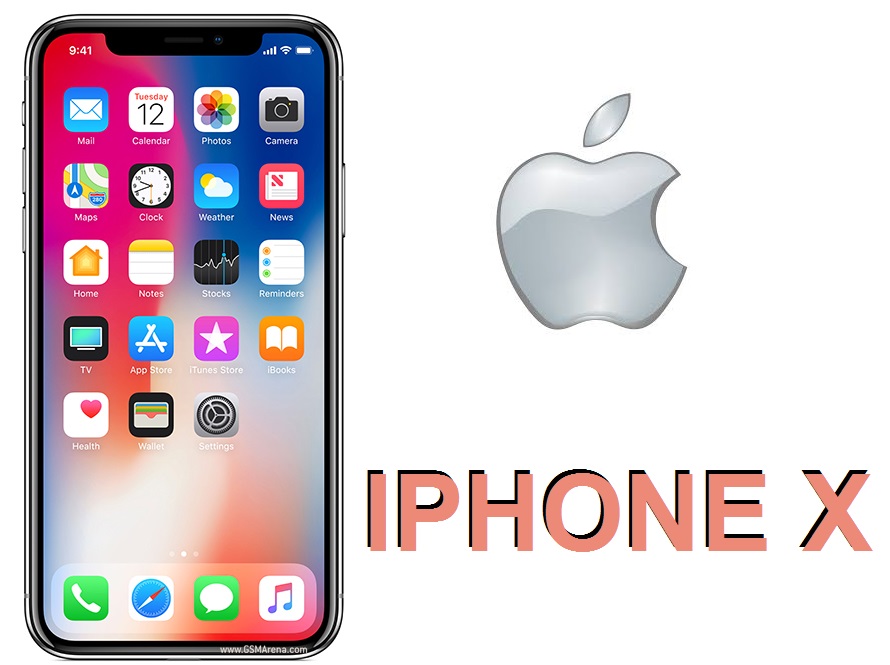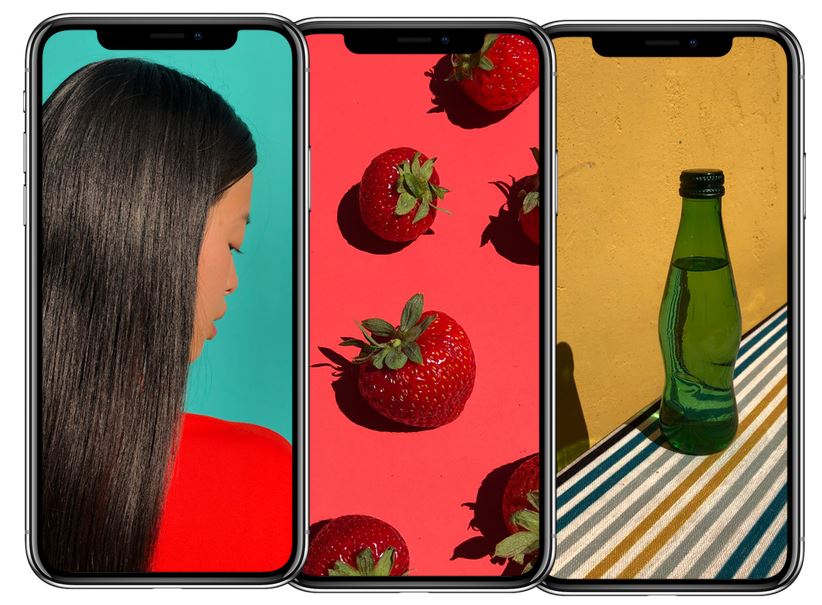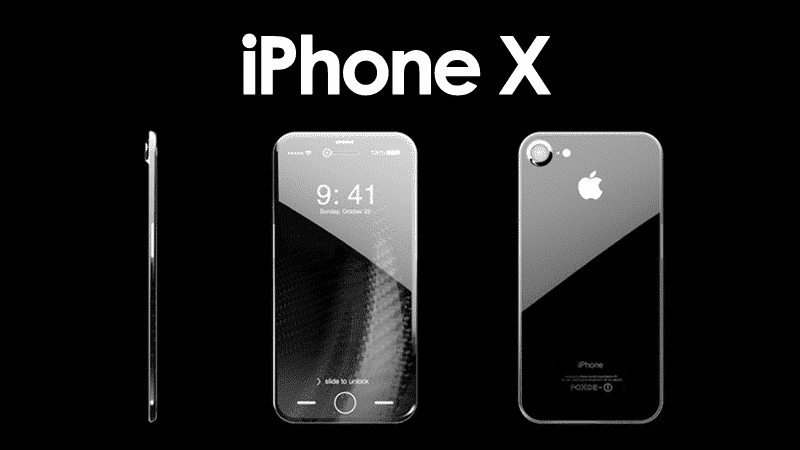
The New Apple IPHONE X Review And Specs
After iPhone 8 and iPhone 8 Plus are in, and -- spoiler alert -- they're exactly the
high-quality updates to last year's iPhones we expected. They're also
sensible and safe compared to the bold, brassy, experimental iPhone X
that we've all been waiting for (that's pronounced "ten," by the way,
not "ex"). Unless you're set on the iPhone 8 or 8 Plus as your
affordable iPhone workhorse, put your buying ambitions on hold until
Apple launches its flagship iPhone X on Nov. 3 (iPhone X preorders kick off Oct. 27).
The
iPhone X is the first iPhone to have a 5.8-inch screen with ultraslim
bezels. The first to use an OLED screen, a different technology than the
typical LCD panels, which Apple says will make colors absolutely pop. The first iPhone to completely do away with Apple's iconic home button, a mainstay since the very first iPhone. Face ID
gives it a new way to securely unlock the phone and pay with your face
(Apple has no more use for your fingerprints). Finally, the iPhone X is
Apple's only new device to nab a portrait mode on the front-facing
camera (despite having just one lens and not two), optical image
stabilization for both rear 12-megapixel camera lenses and -- more breezily -- a new feature to animate poop.
Is the wildly expensive iPhone X worth it? That's the $1,000
question. And with so many high-end phones worth buying, we're facing an
embarrassment of mobile riches at costs that slide in under the iPhone
X's exorbitant price tag. Until the iPhone X comes in for review
(possibly not until late October), we just don't know for certain how it
matches up.
So, here's what we're going to do. We're going to
tell you how much the iPhone X is and how to buy it, highlight some
hardware specs, and talk about three reasons that might make you want
the iPhone X for your own... and two that might sway you otherwise.
1. iPhone X's bold new design feels awesome (hands-on)
We went hands-on with the iPhone X, and although our time with Apple's flagship was brief, it immediately left an impression.By screen size, this is Apple's largest phone ever. But it's actually just about the same size as the iPhone 8, and notably shorter, thinner and lighter than the iPhone 8 Plus. That's because it's almost all screen, with razor-thin bezels.
The improved-resolution OLED Super Retina Display, looks fantastic, too.
Unlike the too-large iPhone 7 Plus, the iPhone X returns to being a good-size phone without compromising any features. In that sense, its design feels right; it feels "perfect." But there's a catch this time. Or rather, there are several.
While it has a really pleasing heft and design -- somewhere between the Essential Phone and Galaxy Note 8 -- that missing home button (more later) is still up in the air. It's not really needed anymore: Tapping to turn on the iPhone X is easy, and swiping up to the home screen or down for Control Center isn't all that different from how many Android phones work.
iPhone X's overdue design overhaul looks great, and helps bring it in line with other slim-bezel Android phones like the Galaxy Note 8 and Galaxy S8, LG's G6 and V30, and Xiaomi's Mi Mix and Mi Mix 2.

2. The iPhone X cameras will be Apple's most advanced
We mentioned earlier that the iPhone X will be the first and only
iPhone this year to have dual OIS (optical image stabilization) on both
rear lenses. That may not seem like a big deal on paper -- after all,
the iPhone 8 Plus has two rear lenses, too -- but in real life, OIS has
the power to make low-light mages brighter and better, to and make
videos much smoother. Samsung's Galaxy Note 8 has dual OIS, which was an
improvement over the iPhone 7 Plus video when we shook the phone.
The
real cake-taker might be Apple's front-facing camera array, which Apple
calls TrueDepth. With it, you'll be able to take depth-effect portraits
of yourself and apply the same new lighting effects to your selfie as
you do to a portrait you take of someone else. Selfies with portrait
mode looked sharp during our hands-on period. This is something we'll
definitely scrutinize when our iPhone X review unit arrives.
3. Face ID does more than scan your mug
Face ID
uses a bunch of cameras, including the front-facing camera and IR
camera, to scan your face with 30,000 invisible infrared dots and let
you in to your iPhone. You just raise the phone, look at it, and swipe
to unlock. Face ID will also work with mobile payments and with
third-party apps, like if you wanted to buy something with Amazon and
pay with your face.
But Face ID is controversial for a number of
reasons. It replaces the home button (more below), so we question the
convenience of repeatedly lifting a phone to your eyes (or hovering over
it) to, say, pressing a home button every time you want to get in.
Its
security is as of yet unproven. Apple says that chances are one in a
million that you'd be able to trick the phone with a photo or mask of
yourself... or with your evil twin. Part of that is because Face ID
scans a 3D map of your visage. Part is because it stores information
locally in an encrypted part of the processor; there's no central server
to hack.

Face ID was hard to evaluate in our short time with
the phone. Apple employees demoed the tech in action, and it seemed to
work quickly: a glance at the phone and a swipe up, and it's unlocked.
Will it be error-free, or always easy to use? Impossible to tell yet.
Animojis use Face ID to make emoji out of you
More than that,
the Face ID tech makes animated emojis, or animojis, mimic your facial
features and liven up messages -- and the iPhone X is the only iPhone to
have them.
Animojis are adorable: we were able to puppet
various 3D emojis with our faces. It felt futuristic and weird, and
mostly it worked. New Snapchat filters optimized for the iPhone X selfie
cam were eerily effective. Your face seems literally painted on.
There's a cat, a panda, a unicorn, a fox, a monkey, a pig, an alien, a
dog, a rabbit, a rooster, a robot and... poop. Thanks, Apple. Keeping it
classy.
Animojis live as an app right inside messages.
3 hidden Face ID features
According to Apple's website, when you're looking at the screen, Face ID will:
- Reveal notification and messages for your eyes only
- Keep the screen lit when you're reading (don't you hate when it dims before you're ready?)
- Lower the volume of an alarm or ringer, because you can hear it, you're right there
Bonus: Fast charging and wireless charging, too
If you want to charge the iPhone X, 8 and 8 Plus 50 percent in 30 minutes, you can.
But you'll need to buy a Lightning-to-USB-C adaptor to do it. That's going to cost you, and it sure isn't as elegant or convenient as built-in USB-C. Here's everything you need to know about the iPhone X and fast charging.
Wireless charging mats aren't new, but Apple has announced its own forthcoming solution. The AirPower mat will charge all of the newly announced iPhones plus the Apple Watch Series 3 and AirPods ($175.76 at Amazon Marketplace), assuming you have a wireless charging case.
The only catch: Apple won't have it ready until 2018, and you'll have to buy it after the fact. Until then, the iPhones, Watch and AirPods are compatible with any other third-party Qi charging pad or dock.
But you'll need to buy a Lightning-to-USB-C adaptor to do it. That's going to cost you, and it sure isn't as elegant or convenient as built-in USB-C. Here's everything you need to know about the iPhone X and fast charging.
Wireless charging mats aren't new, but Apple has announced its own forthcoming solution. The AirPower mat will charge all of the newly announced iPhones plus the Apple Watch Series 3 and AirPods ($175.76 at Amazon Marketplace), assuming you have a wireless charging case.
The only catch: Apple won't have it ready until 2018, and you'll have to buy it after the fact. Until then, the iPhones, Watch and AirPods are compatible with any other third-party Qi charging pad or dock.

Some other things to consider...
1. No more home button: This is huge
As expected, the iPhone X has done away with the home button. So
there's going to be a bit of learning curve, as we get familiar with the
new gestures that unlock the phone, launch Siri, toggle between apps,
and bring up Apple Pay.

Press to launch Siri: If you're not using your voice, you press and hold a side button to get Apple's assistant going.
Swipe to multitask:
Multitasking is still here, never fear. Swipe up from the bottom of the
screen, then continue to hold while swiping left or right to switch
apps.
Double-tap for Apple Pay: You can still do this even with no home button. Tap the side button twice to launch Face ID for Apple Pay.

2. Stiff competition and maybe limited supply
Apple is already making you wait for the iPhone X, and it's rumored to be in extremely short supply when it does finally arrive.
That,
and the cost, are why it's important to seriously consider what it is
you want in a phone, and if an even slightly cheaper one, like the
iPhone 8, 8 Plus, Galaxy Note 8, or future Google Pixel 2 (and we don't
know how much that will cost) can give you what you need for less.
For example, here are some great phones that are cheaper than both the iPhone X and Galaxy Note 8.
iPhone X price and when to buy it
The iPhone X ain't cheap. It starts at $999 in the US, £999 in the UK
and AU$1,579 in Australia. The 256GB version costs $1,149, £1,149 and
AU$1,829. Preorders begin Oct. 27, and the phone ships Nov. 3.
By
contrast, the iPhone 8 and 8 Plus start at $699 and $799, respectively.
(They're £699 and £799 in the UK, or AU$1,079 and AU$1,229 in
Australia.)

iPhone X specs: Different from the iPhone 8 and 8 Plus
All three new Apple iPhones support wireless charging, and are water-
and dust-resistant. They all come with 64GB and 256GB storage options
and the same A11 Bionic chip. They also all get the same upgraded
slow-motion video support (1080p at 120fps or 240fps).
Here's how to tell them apart:
- iPhone 8 and 8 Plus retain the home button with Touch ID
- iPhone 8 and 8 Plus are cheaper
- Preorder iPhone 8/Plus Sept. 15; they'll be available Sept. 22
- iPhone X preorders start October 27; you won't get the phone until November (see above)
- iPhone X has a larger screen, no home button, OIS in both rear cameras, and you can take portraits with the front facing camera

iPhone X specs highlights
- 5.8-inch OLED display with 458ppi pixel density
- 2,436x1,135-pixel resolution (Apple calls this a Super Retina display)
- Dual 12-megapixel rear cameras with OIS on both cameras
- Portrait mode with beta portrait lighting feature (the 8 Plus also has this)
- Front-facing 7-megapixel camera has portrait mode now, too
- No home button
- Face ID to unlock the phone (hold your phone up to your face)
- A11 Bionic processor
- Glass back and front
- Supports wireless charging
- 64GB and 256GB options
- Water- and dust-resistant
- Animojis make emojis out of you
- iOS 11 software with Siri improvements
- Black and space gray (no gold)
Here's the thing about Apple calling it the iPhone X
Have you spent the entire time you've read this mentally referring to
the iPhone X as the "iPhone Ex" instead of as the "iPhone 10"? We can
relate. But more than confuse and confound, Apple's decision to name
this iPhone as it did might just signal something more.
Keep in mind that we now have an iPhone 8 and
an iPhone "10", but no iPhone 9. That's a curious omission, and one
that could lead to Apple changing the way it names iPhones for good


